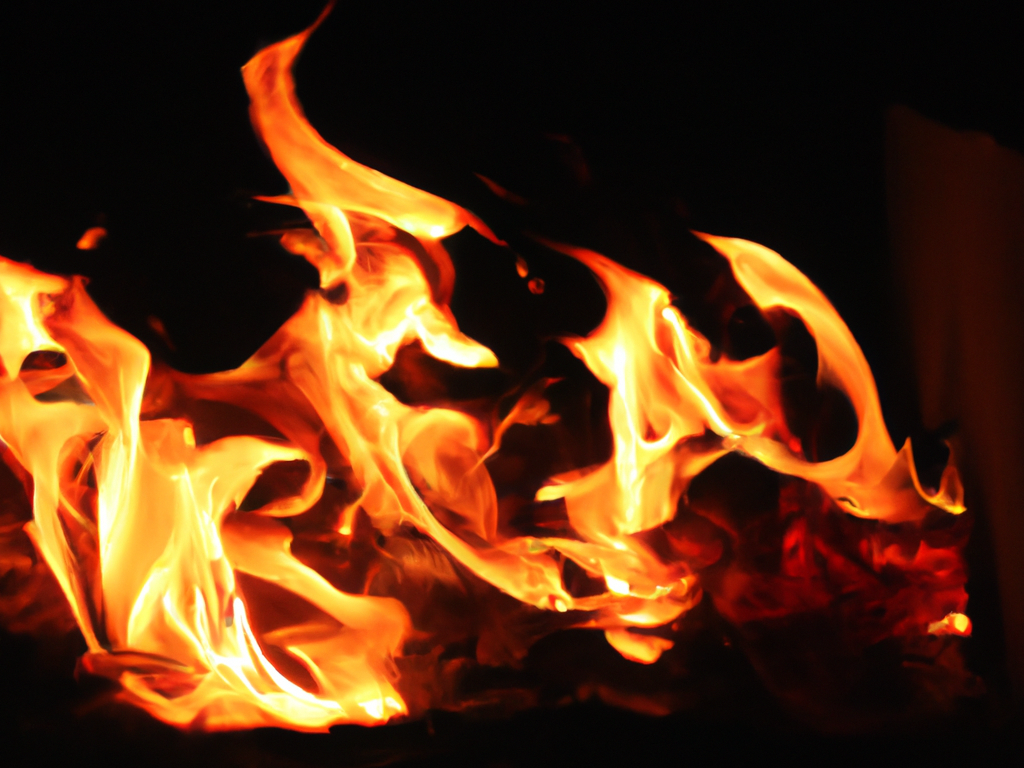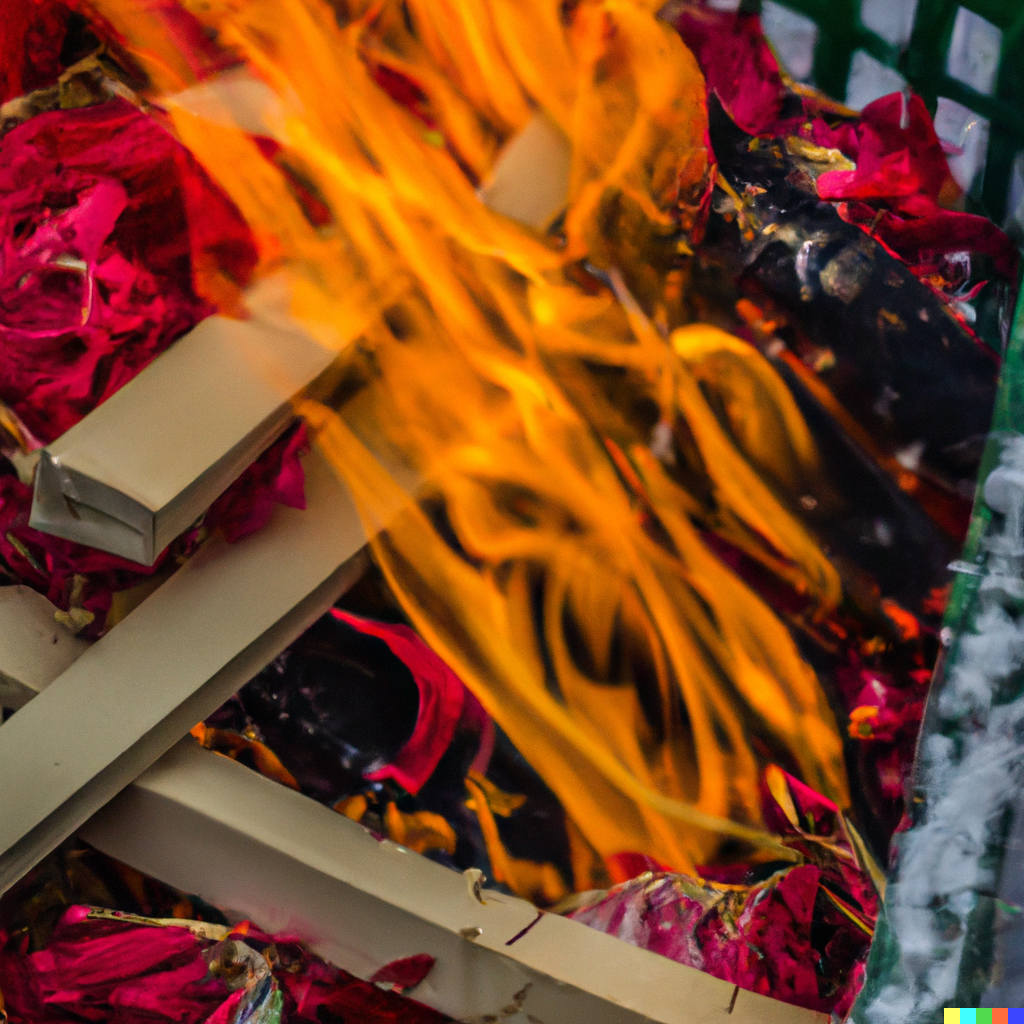Fire has been an essential element of human civilization for thousands of years. It has been used for warmth, light, cooking, and even as a tool for crafting tools and weapons. But beyond its practical uses, fire has also been imbued with spiritual significance in many cultures and belief systems around the world.

In Hinduism, fire is considered a sacred element, and the god Agni is associated with it. Fire is used in various religious ceremonies and rituals, including the havan or fire ceremony, which is believed to purify the atmosphere and help create a connection between the physical and spiritual realms.
In Native American cultures, fire is also seen as a powerful spiritual symbol. It is used in purification ceremonies to cleanse the body and mind of negative energies and create a sacred space for spiritual connection. Fire is also used in vision quests and other spiritual practices to facilitate communication with the spirit world.
Similarly, in many other cultures and belief systems, fire is associated with transformation and renewal. It is believed that by releasing old patterns and beliefs and allowing them to be transformed in the fire, individuals can experience personal growth and spiritual evolution.
In addition to its spiritual significance, fire is also an integral part of many cultural practices and traditions. For example, the burning of paper effigies and ghost money in Chinese culture is believed to transfer material possessions to the spirits of the deceased for use in the afterlife.
Overall, fire has played a significant role in human spirituality and culture throughout history. It has been associated with purification, transformation, and renewal and used in a variety of religious and cultural practices. While the specific beliefs and practices associated with fire vary across cultures and belief systems, its spiritual significance and power are a common thread that connects them all.
Fire itself does not have a shadow because it is a source of light and not an object that can block or reflect light. However, if a light source shines on an object in front of a flame, the object may cast a shadow that is visible behind the flame. In this case, the shadow is not actually being cast by the flame itself, but rather by the object blocking the light behind it.
When a flame burns, it can create flickering and wavering patterns of light and dark areas around it. This is due to the movement of the hot air rising from the flame, which causes the refractive index of the air to vary. This variation in refractive index causes the light passing through the air to bend and refract in different ways, leading to the appearance of wave-like patterns of light and shadow.
Additionally, the flickering patterns of light and shadow around a flame can be influenced by other factors such as air currents and the shape of the flame itself. The complex interplay between these different factors can create intricate and beautiful patterns of light and shadow that can be observed around a burning flame.

Burning paper effigies or “ghost money” is a traditional practice in Chinese culture that is typically associated with ancestor worship and the belief in the afterlife. It is believed that by burning paper representations of money and other material goods, these items will be transferred to the spirits of the deceased, who can use them in the afterlife.
In addition to burning paper money, it is also common to burn paper effigies of other objects, such as houses, cars, and even electronic devices, as offerings to the spirits. These items are believed to help the spirits in the afterlife by providing them with material possessions that they can use and enjoy.

The practice of burning paper effigies is also thought to help ensure the well-being of the living by placating the spirits of the deceased and preventing them from causing harm or misfortune. Additionally, the smoke produced by the burning paper is believed to carry messages to the spirit world and serve as a means of communication with the ancestors.
Overall, the burning of paper effigies is a deeply ingrained cultural practice in Chinese society that reflects a belief in the afterlife and a desire to honor and remember the deceased.

The burning of paper effigies and ghost money is not unique to Chinese culture, and similar practices can be found in other Asian societies and cultures.
For example, in Japan, there is a tradition of burning incense and offering paper money and other items to the dead during the Obon Festival, which is a Buddhist event that celebrates the return of the spirits of the ancestors. Similarly, in Korea, there is a tradition of burning paper money and food as offerings to the ancestors during the Chuseok holiday, which is also known as the Korean Harvest Festival.
In other parts of Asia, such as Vietnam, Cambodia, and Thailand, the burning of paper effigies and offerings to the dead is also a common practice. These practices are often associated with local religious beliefs and customs, as well as with the broader cultural traditions of the region.
Overall, the burning of paper effigies and offerings to the dead is a widespread practice in many parts of Asia, and it reflects a deep respect and reverence for the ancestors and the afterlife in these cultures.
In some cultures and belief systems, fire is considered to have spiritual power and significance. For example, in Hinduism, fire is seen as a sacred element and is used in various religious rituals and ceremonies. The god Agni is the deity associated with fire, and he is believed to have the power to purify and transform.

Similarly, in some Native American cultures, fire is seen as a symbol of the divine and is used in ceremonies and rituals to connect with the spiritual realm. Fire is often used in purification ceremonies to rid the body and mind of negative energies and to create a sacred space for spiritual connection.
In many spiritual practices, fire is also associated with transformation and renewal. It is believed that by letting go of old patterns and beliefs and allowing them to be transformed in the fire, individuals can experience personal growth and spiritual evolution.
Overall, the spiritual significance of fire varies across different cultures and belief systems. In some cases, fire is seen as a powerful and sacred element with the ability to connect the physical and spiritual realms, while in others, it may have a more practical or symbolic role in spiritual practices.